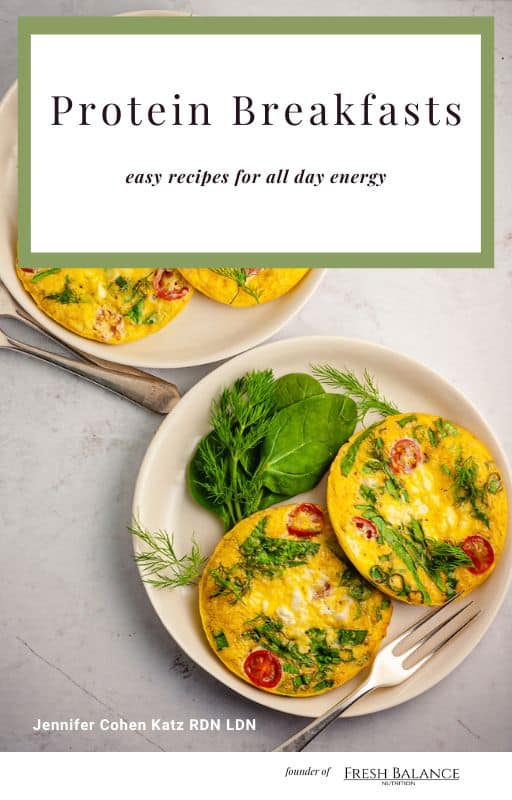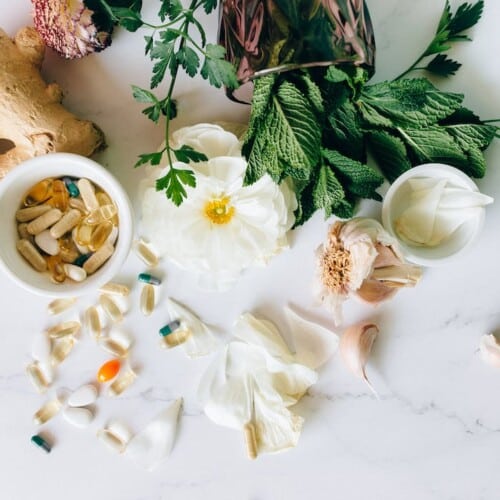Natural GLP-1 boosters work more slowly than weight loss medications to manage your weight and calm your hunger. However, they do not have the side effects associated with meds, they can offer sustainable weight loss, and they support healthy lifestyle habits.
How does GLP-1 work?
Remember, glucagon-like peptide-1 is a hormone that is produced naturally by your own body. When you eat food, GLP-1 hormone is produced in your gut. Certain foods stimulate your body to make more GLP-1 than others.
The GLP-1 messages your pancreas to make insulin, which pulls glucose from your blood and your blood sugar is lowered to healthy levels. This hormone tells your brain you are full so you feel satisfied and can stop eating. It decreases your appetite and allows you to turn your attention away from food as your meal moves along your digestive tract.
Semaglutide and other weight loss medications mimic the action of this hormone. They are called GLP-1 agonists. These medications jump in and activate many times more GLP-1 than your body can produce. Many people experience side effects when taking this level of GLP-1 agonists.
Want support planning meals to increase your GLP-1 naturally? Let’s figure it out for you!
What does GLP-1 do in my body?
The GLP-1 released from your body at a meal only stays in circulation for a few hours. This is in contrast to the amount of GLP-1 in semaglutide and other weight loss medications which lasts for days. But if you make some changes in your diet you can take advantage of this opportunity that your own body offers to release GLP-1 after you eat a meal.
Hours after a high fiber meal GLP-1 is released as the fiber you ate, way back during that meal, is digested by your gut bacteria. GLP-1 and other appetite hormones not only suppress your appetite, they’ve been linked to lower body weight and better glucose balance.
All of this goodness is happening hours after you eat. Notice that you can last between meals if they contain what we would consider healthy choices or whole foods.

What are some ways to increase my GLP-1?
You can boost your body’s own production of GLP-1 hormone. This can help you lose weight, balance your blood sugar, prevent chronic disease, and improve your digestion.
The level of GLP-1 your body naturally produces can be boosted by eating certain foods, micronutrients, probiotics, and herbs. So, eating meals full of healthy whole foods and fermented foods is a great way to boost your own body’s production of this hormone.
How can I increase my GLP-1 naturally?
Fiber
One way to increase GLP-1 is to eat a diet high in fiber. We seem to have a hard time eating enough of it. The general recommendation is about 25 grams but I encourage my clients to gradually go for 30-40 grams per day.
It takes 4 to 10 hours for the fiber we ate in a meal to be digested. So when we eat enough fiber, we probably aren’t starving in between meals or feeling hangry as we get closer to the next meal. That might mean you’ll avoid overeating at the next meal too.
For a GLP-1 boost we want to target fermentable fiber. One type of fermentable fiber is beta-glucan, found in barley and oats. Beta-glucan fiber may help keep blood sugar balanced, lower blood pressure and help us pass on snacking between meals.
Other fermentable fibers are dextrin in wheat, oligosaccharides in beans, peas and lentils, and pectin in apples, pears and green bananas.
Protein
Protein has a superpower and that is to help us feel full. It’s also your go-to for building and repairing tissues, and proteins are big players in the GLP-1 game. Stick with healthier sources like poultry, fish like salmon and tuna, eggs, tofu, and legumes.
While you are enjoying your protein-rich meal, your body breaks this macronutrient down into amino acids. These amino acids are like messengers, signaling your body to release GLP-1. So, whether it’s a grilled chicken salad, a fish taco, or a veggie omelet, you’re not just satisfying your taste buds but also giving a high-five to your metabolism.
Healthy fats
Healthy fats, like avocados, nuts, seeds, olive oil, and fatty fish like salmon can boost GLP-1 secretion. It’s time to get familiar with the benefits of good fats and oils because moderate amounts can help balance blood sugar and decrease inflammation.
When you indulge in these good fats, your body responds by releasing GLP-1. It’s like a culinary tag team – healthy fats and GLP-1 working together to bring balance to your metabolism.

Flavonoids
Flavonoids like quercetin, curcumin, and ECGC are GLP-1 boosters too. Find them in vegetables, fruits, berries, and nuts. You may have heard about ECGC in green tea. Sources of curcumin are turmeric powder, turmeric root, or curcumin supplements.
Probiotics
We have billions of good bacteria in our gut and they may be the most important player increasing GLP-1 naturally. Gut bacteria make short-chain fatty acids. One SCFA called butyrate boosts GLP-1.
Here are some sources that can help boost butyrate levels and, in turn, support GLP-1 production:
- Fiber-Rich Foods: Whole grains, oats, barley, and bran are excellent sources of dietary fiber. These fibers reach the colon where they are fermented by gut bacteria into butyrate.
- Vegetables: Cruciferous vegetables like broccoli, Brussels sprouts, and cauliflower, as well as other fiber-rich vegetables, contribute to the production of butyrate.
- Legumes: Beans, lentils, and peas are not only rich in fiber but also support the production of butyrate in the gut.
- Fruits: Certain fruits, such as apples, bananas, and berries, contain soluble fibers that can be fermented into butyrate.
- Nuts and Seeds: Almonds, flaxseeds, and chia seeds are good sources of fiber that can promote the production of butyrate.
- Fermented Foods: Some fermented foods, like kefir and certain types of yogurt, may contain butyrate or promote its production in the gut.
A study showed that Akkermansia muciniphila secretes a glucagon-like peptide-1-inducing protein that improves glucose balance and lowers risk of metabolic disease.
While it’s challenging to get Akkermansia muciniphila through food, you can take steps to promote its growth and abundance in your gut. Feed this gut-friendly bacteria by eating things like berries, garlic, onions, salmon, olive oil, and flaxseeds.
Berberine
Berberine is a natural compound found in various plants, like barberry, goldenseal, and Oregon grape. It has been gaining popularity for its potential health benefits.
When you introduce berberine into the scene, it interacts with certain cellular pathways, encouraging the release of GLP-1. This, in turn, can contribute to better blood sugar control and support a healthy metabolism.
Resveratrol
This polyphenolic compound is found in peanuts, pistachios, grapes, red and white wine, blueberries, cranberries, cocoa, and dark chocolate. You can also get resveratrol by taking supplements.
It activates certain pathways that lead to an increase in GLP-1 production. Including some resveratrol in your routine can lead to better blood sugar control and support a healthy digestive system.
Increasing your body’s own GLP-1 hormone allows you to feel satisfied after eating a meal. It can help you control your appetite and also your portion sizes. With a more balanced blood sugar level, you may be able to get your body to lose excess fat. You’ll also decrease your risk for metabolic syndrome, diabetes, and other health issues.
Interested in taking a look at my dietitian-approved suggestions for probiotics, berberine, curcumin, and resveratrol? Look here.
Fresh Balance Nutrition recipes to increase GLP-1 naturally:








